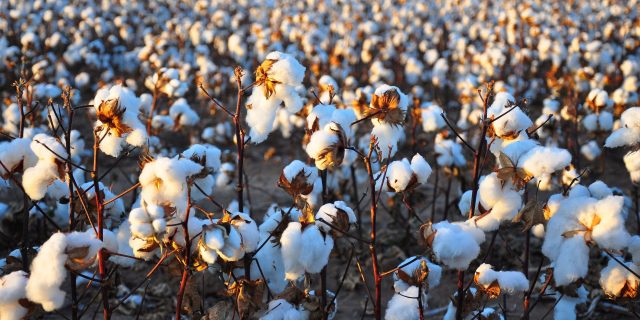02
Nov
Cover Crops Attract Pest Predators which Reduce Pesticide Use

(Beyond Pesticides, November 2, 2021) Cover crops create habitat that draw in pest predators and help mitigate crop injury, finds research published in the journals Agroecosystems and Biological Control from scientists at the University of Georgia. Expanded predator diversity can reduce pest pressure that drives conventional chemical farmers to apply toxic pesticides, and the authors of the study find the practice to be economically viable within these cropping systems. “There’s a motion of change going on where growers are thinking more about using natural systems instead of just using pesticides,” said co-author Jason Schmidt, PhD in a news release. “Producers must use all tools available to make a profit, so if they can promote beneficial insects in the system to aid in pest control, fewer inputs are needed and that should lead to reduced costs of production. ”
To determine how beneficial cover crops were to cotton production, researchers began with experimental crops established over two years in 2016 and 2017 in Georgia. Twelve cover crops plots were established with crimson clover and rye, while a plot not planted with cover crops was used as a control. Researchers planted the cover crop in early November after the previous cotton crop was harvested, and terminated and rolled the cover crop 2 weeks prior to a May cotton planting. Cover crop residue was sucked up with a reverse leaf blower the scientists created and sampled six times at random locations. Analysis was then conducted on the gut content of the pest predators retrieved in order to determine what pests they were consuming.
Predator communities were found to be much more diverse (7 to 10x more) in cover cropped fields. While the cover cropped fields contained a range of spiders and other predaceous bugs, control fields mostly contained a specific type of beneficial beetle. Researchers found the benefits of cover cropping to be most pronounced in the early spring. But as the cover crop degrades, differences between cover cropped and control plot predator communities began to even out.
“There are early-season benefits of cover crops when cotton plants are small, said Dr. Schmidt. “The cover crop residue forms a complex habitat matrix with cotton seedlings popping out of it and there are insect predators in there that can defend those young plants from pests.” Dr. Schmidt indicates that the change occurs when there is more of the cotton crop above ground than the cover crop. “Later in the season, you see similar communities. So, even though there’s a little bit of habitat on the ground from those cover crops, it doesn’t seem to matter in terms of the overall community in the system when cotton plants become the primary habitat available.”
A deeper review of the findings show that thrip populations, which can often hinder cotton crops in early growth stages, are mitigated by increased cover cropping. Cover crops also bring in predators that hamper stink bug damage to cotton bolls. An economic analysis found cover cropping to be a cost effective approach comparable in expense to a completely conventional chemically managed system. “These results suggest that conventional growers utilizing cover crops could reduce insecticide inputs through natural reductions in pest pressure, and overall do not incur additional production costs,” reads the study in Biological Control.
The scientists indicate that they will continue their work to better understand the complex interactions that occur between pest and predator in crop fields. “That’s our ultimate goal, understanding the functioning of diversity and the beneficial roles species play in production systems and best harvest these services for production systems, like cotton,” said Dr. Schmidt.
The study’s results are likely to be unsurprising for organic farmers and even many home gardeners that make certain they keep their soil covered with organic matter year-round. Key to soil conservation are practices that minimize soil disturbance, increase plant diversity, and continually keep soil covered with live plants or roots in the ground.
The study results are encouraging in the context of a system primarily reliant on chemical inputs. Termination of the cover crop utilized an unnamed chemical herbicide, for instance. Although herbicides are intended to target plant material, products like glyphosate threaten a broad range of species. A federal biological assessment published late last year found that glyphosate itself is likely to affect 93% of endangered species. Thus a range of predator insects that may have assisted in further, or more sustained pest management may have been killed off by the use of a chemical to terminate the cover crop. Non-toxic cover crop termination options include mowing, or the utilization a roller/crimper machine that bends plant residue uniformly over the surface of soil.
In study after study, results show that creating habitat that increases diversity enhances plant productivity and reduces toxic pesticide use. Conventional cotton production can utilize these practices and see some ephemeral benefits, but when properly maintained, these practices decrease pest pressure and create more stable ecological systems that provide lasting ecological and economic benefits. To truly break out of a reliance on chemical inputs, conventional systems must move not only towards cover crop diversity, but crop diversity in general, as multi-crop farming practices produce higher yields than monoculture farmlands.
Most organic farmers, required to maintain or improve soil health under organic standards, are already conducting practices that work with natural systems. Help continue to grow organic, so that more farmers will adopt these safer practices, by purchasing organic products whenever possible. To help become part of the organic solution, join Beyond Pesticides today, and support our fight to maintain the integrity of organic standards from attacks by the conventional chemical industry.
All unattributed positions and opinions in this piece are those of Beyond Pesticides.
Source: Agroecosystems, Biological Control, University of Georgia news release










